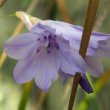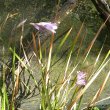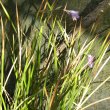| Botanical Name |
|
| Family |
Iridaceae - The iris family. |
| Pronunciation |
|
| Common Name(s) |
|
| Plant Group |
- Bulb / Corm / Rhizome / Tuber / Epigeal bulb Bulbs: are made up of fleshy scales as in an onion
Corm: a short, swollen, underground stem that is hard and not fleshy as in a gladiolus
Tuber: a solid, fleshy, underground, storage organ as in a potato
Rhizome: an underground, horizontal, swollen stem at the base of the plant as in an iris
Epigeal bulb: bulbs that rest above the ground with only the roots anchoring the plant to the earth as in albuca
|
| Plant Size |
- Medium to Large
| Tree | 15m to 20m |
| Shrub | 2m to 3m |
| Perennial/ground cover | 60cm to 75cm |
| Bulb | 60cm to 1m |
| Succulent | 60cm to 1m |
|
| Position |
- Light or Dappled Shade Found below trees with sparse, open foliage. Ideal for the protection of herbaceous plants.
- Partial Shade The area is in shade for part of the day and in full sun for part of the day.
- Sun The area is in full sun for all or most of the day, all year round.
|
| General Information |
- Drought Tolerance: Moderate The plant is moderately adapted to arid conditions and can survive short periods of drought and high temperatures without extra water.
- Evergreen Plants that have leaves all year round.
- Frost: Hardy The plant can withstand freezing temperatures or frost without artificial protection.
- Water Moderate These plants will need some extra watering compared to water-wise plants. Plant them together, in at least some shade and in a convenient proximity to the house so that grey water can be utilised during times of drought.
|
| Specific Information |
Dierama erectum is an unusual dierama, having stiff, upright, flower spikes, unlike most other dieramas which have long, gracefully droopimg flower stems. This late blooming dierama adds colour to the garden at a time when most summer flowering plants are well past their full flush of blooms. It is rare and is usually only available at specialist nurseries.
Dierama erectum has been classified as endangered in its natural habitat. Most of the populations of this plant are on land owned by a commercial forestry concern, where they have been found to be declining due to the loss of their grassland habitat, overgrazing and collection of the corms for traditional medicine. It is one of the most vulnerable and rare species of Dierama.
|
| Ad Break |
|
| Flowers |
| Description |
clusters of outward-facing, tubular flowers with small diamond-shaped markings at the inner base of the flower, crowded on stiff, near-upright flower spikes
|
| Season |
- Summer to Autumn Plants will seldom bloom for the entire season as given in the list, but should flower during a period within these parameters.
|
| Colour |
|
| Growth Rate |
- Slow to Moderate Specifying growth rate can be very misleading as there is considerable variation of growth rate depending on type and species of plant, available water, supplementary feeding, mulching and general care, as well as the plants suitability and adaptability to the garden environment.
|
| Plant Uses |
- Attracts bees, butterflies or other insects This plant attracts insects which can be food for birds or other creatures in your garden.
- Border A strip of ground, at the edge of a driveway or path in which ornamental plants or shrubs are planted.
- Container Trees, shrubs and ornamental species that can adapt to growing in a restricted environment.
- Filler Either a fast growing tree or shrub used temporarily to fill in an area while the permanent plants grow to a desired size, or a plant used to fill gaps in borders or beds.
- Interplanting Arranging and planting plants in the garden that have different blooming times and habits of growth, extending the amount of time in which the area is in flower.
- Water Features These plants may have dramatic, lush foliage or graceful form. They do not shed excessive leaves and do not have invasive root systems.
|
| Distribution and Habitat |
in northern KwaZulu-Natal in a very small area between Vryheid, Ngome and Paulpietersburg, in wet mistbelt grassland, along streams and in rough wet grasslands
|
| Planting Suggestions |
Plant Dierama erectum in humus-rich, free-draining soil in a sheltered, sunny position. Water freely during the growing season, but avoid excessive winter wet. Dieramas need only occasional grooming. Cut down faded flower stems after you have collected the dried seed cases. Cut away old foliage (or just pull out the dried leaves) in early spring and top dress annually with compost and mulch. If necessary lift and divide the corms at the same time. Re-plant corms and off-shoots 5 mm deep. Seedlings must not be allowed to dry out completely and should be kept moist and frost free, at least for the first season or two. Once planted out and established they will tolerate drier conditions.
|
| Lorraine's Garden Notes |
Mole rat warning: If you have mole rats, plant your Dieramas in containers.
|
| Medicinal Uses |
The corms of Dierama erectum are used for enemas and treating stomach ailments.
|
| Ad Break |
|








Discuss this plant
Share knowledge, ask a question or give an experience.